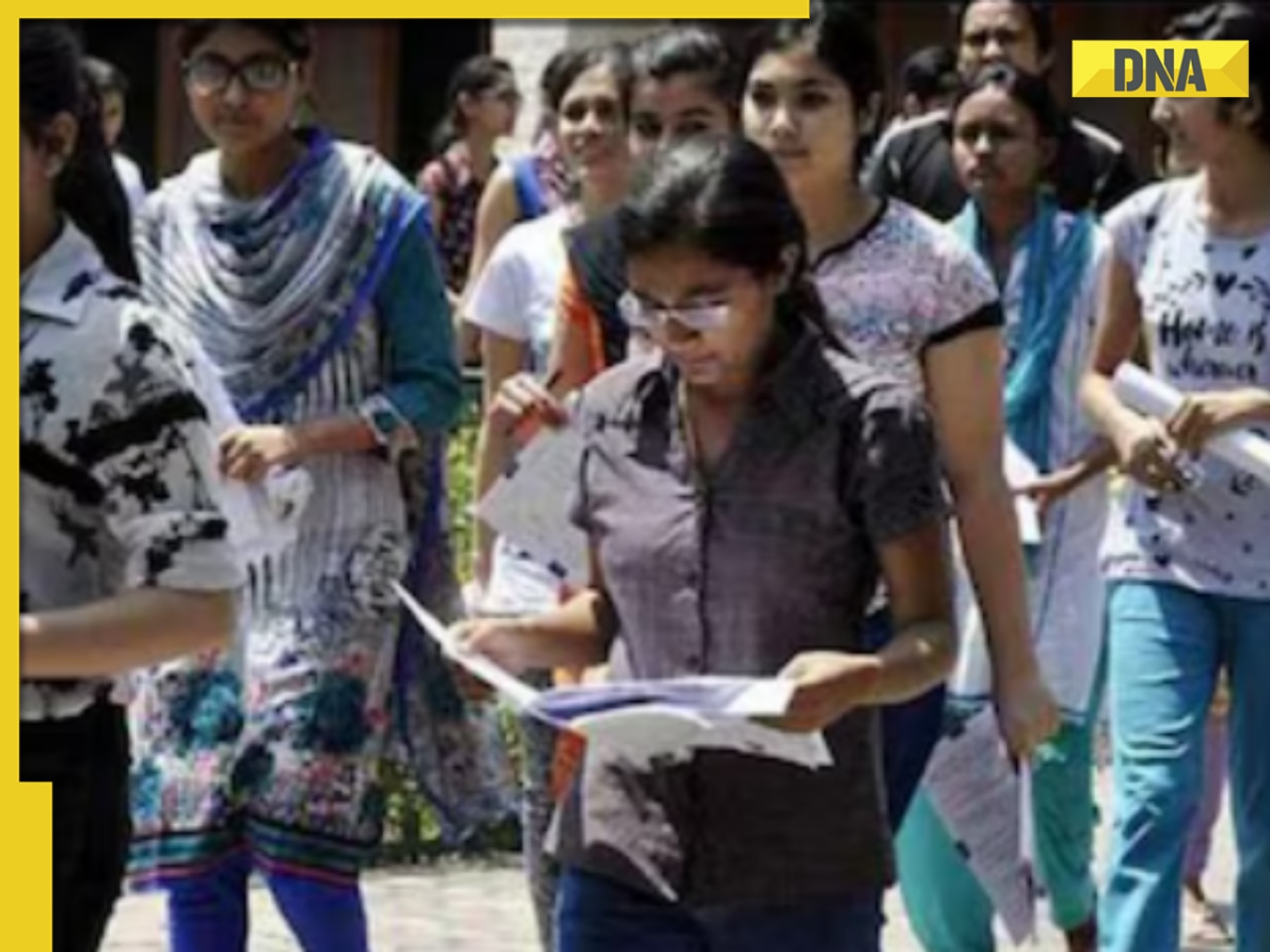- LATEST
- WEBSTORY
- TRENDING
LIFESTYLE
Lost recipes: A look at some food items that we are unlikely to taste again
Even as a new kind of food culture is taking roots in India, there are dozens of delightful local dishes, snacks and ingredients that are and have been disappearing from our tables. Pooja Bhula tracks down some food items that we are unlikely to taste again
TRENDING NOW
UPPER REACHES OF UTTARAKHAND
Garhwal, the hilly region of Uttarakhand, is said to be quite proactive in preserving continuing use of organic and traditional seeds and grains in India. And the people take pride in their home-grown produce. So it's common to come across people, including in towns such as Dehradun, who like to tend to their kitchen gardens or grow greens on their window sills.
"The shift in their food choices therefore is not huge. Even so, there are a few food items that are fading out," says Rushina Munshaw Ghildiyal, who began archiving Garhwali recipes nearly two decades ago. "Packaged snacks such Maggi noodles and Kurkure are aspirational foods. They are marketed so well that even people in areas affected by malnutrition prefer to spend on these than on nutrition-rich food."
With Punjabis having settled in tourist hotspots such as Mussoorie, the community's food too has wielded an influence in the region. The traditional mandua ki roti or the earthy millet porridge called paleu have been relegated to nostalgia foods, whereas wheat rotis and punjabi-style parathas have become mainstays. "Garhwal grows some 30 varieties of dal. These are prepared in several ways, such as chainsoo (roasted, coarsely ground and cooked) and fanu (soaked and crushed), etc. but locals can't imagine that tourists would want to pay for their food," says Ghildiyal, who was spurred to archive Garhwali cuisine when, as a newly wed bride from a Kutchi-Bhatia family, she couldn't find a cookbook on the cuisine. "They still don't understand my fascination for their recipes."
Who can blame them? Despite the recent budding romance for community cuisines, traditional food is largely branded and perceived as uncool. "Another factor is that in the earlier days, ingredients such as stinging nettle or green figs were foraged while going to and fro on foot for various activities. Now, with city-dwellers leading sedentary lifestyles, preparations using them like saag, chutney, etc. are fading away."
Besides, fast-paced lifestyle is also pushing time-consuming preparations to the edge, such as "colocasia- and lentil-based naal badis (pipe-shaped nuggets) that take two-three weeks to sun-dry and prepare. Or kachmouli, a smoked, goat delicacy for which the animal is marinated and roasted whole over green twigs. This takes an entire day. Once a ritualistic part of weddings, kachmouli is a rare find today."
THE TWO BENGALS
Images of mouth-watering West Bengali dishes like aloo poshto, luchi, ilish, mache jhol and rosugullas flash through your mind when you hear of Bengali food. But the cuisine of its eastern sister, though lesser known, is just as integral to the milieu. A number of factors — Partition, rapid development and expansion of cities, the swallowing up of lush countryside and its ponds, as well as migration — have contributed to changes in the region's food culture. "Bengal had a great foraging culture because besides what we grew, a vast variety of uncultivated foods such as greens, fish and snails, flourished in east Bengal and parts of west Bengal," says food writer Pritha Sen.
"When the British came, several crops were replaced with indigo, cotton and poppy, and over time, construction activity led to the filling up of ponds. So we've lost a lot of ingredients, and with them, the dishes. For instance, a much coveted delicacy of East Bengal (now Bangladesh) made during my grandmother's time was shapla bhela bhaja (water lily rafts), a snack for which water lily stems were cut and stitched together into structures resembling log-rafts, dipped in batter and deep fried," adds Sen.
Refugees and their food faced discrimination, and so the East Bengali tradition of cooking Bombay duck or eel has declined over time. With the passage of two generations since the partition, Sen feels there's now some acceptance for the delicacies from east Bengal, especially muithas (steamed balls of clownfish). This is why farmers' markets and organised retail vendors are trying to supply some of these ingredients today, but they command a premium, and often, the new generation doesn't know how to use them. "Have you heard of banana stem murrabas?" poses Sen to demonstrate her point. Yet other ingredients, such as the indigenous red radish are losing out to fast-growing hybrid varieties. Convenience too has played a role — that's the story of choi, a pepper that was widely used by Bengalis to add a fiery temperament to food long before chillies conquered India. Sen, who with great effort managed to find small pockets in Howrah and Sunderbans, still using it, realised that choi may have lost to chillies as the latter provides pungency instantly, whereas extracting it from choi requires some effort.
As for West Bengal, Sen says, "Highly aesthetic flour- or dal-based coconut sweets called pithas pre-dated chenna sweets; they were made by the women of the house and are still not available commercially. While one may still find simple pithas, it's impossible to come across ones that follow complex recipes such as pumpkin seed or ginger pithas, believed to have descended from Vedic times".
A delicacy that people are desperately trying to hold on to, but is slipping away, is goyna bodis (gehna wadis). Made of lentils, and artistically shaped akin to alpana (a form of rangoli) motifs, goyna bodis are time consuming and demand immense skill. While a few NGOs have managed to keep them alive in Midnapur, few old hands want to continue to make them.
As Sen points out, people are trying out at home the commercially popular traditional dishes, but not everyday home recipes. In the olden days, there were delicacies cooked with the fish's head, tail and entrails — the most nutritious parts. Today, only the cash-crunched will eat these. The hired cooks of today's generation lack the knowledge and skill to use these parts."
RECIPE: KHEERER LICHU (KHOYA LITCHIS)
- Reduce milk to a thick pliable dough consistency.
- Shape the milk solids as that of the fruit litchi.
- Embed poppy seeds to create a rough raised surface.
- Colour with beetroot juice.
- Stick a clove in, at the base of the stalk, alongwith two or three cardamom seeds.
- Arrange the litchis along the branch and leaves of the actual plant before serving.
MANIPURI DELIGHTS
Although Manipur still gets a significant percentage of its revenue from agriculture, Khanna notes that cash crops have pushed millets and some traditional produce such as Job's tear, locally called mim tang, and maize, to the periphery. Significant to her childhood memory, both were used to prepare porridge.
"I didn't know of sulphur beans until my father recently told me a lovely story. Earlier, people considered them to be poisonous. We began consuming them only after a mithun, or gayal, was seen eating the beans and realised we could too. The beans would be boiled until they softened, then soaked in a running stream for about a week to remove the poisonous elements, before cooking them into a porridge with sweet potato."
Deforestation in the hill state has also played the devil. "With deforestation a lot of uncultivated produce, like figs has dwindled. And with disappearance of jhum or slash-and-burn cultivation, people no more have farmlands to tend to in forest, and so the culture of foraging has faded out too. As a result, figs are now a prized find and fig wine, which was once abundant, is not found easily in markets," says Khanna.
RECIPE: THEIPI ZU (FIG WINE)
- Peel 5kg figs, cut each into two, sprinkle 1kg sugar and seal in an airtight container big enough to accommodate the juice that will ooze out in the course of time.
- Leave the container in a corner of the house where there's no sunlight, for seven days.
- On the eighth day, gently open the seal, stir with a long spoon and you'll notice how the container is filled with natural juice that's come out from the fruit.
- Filter the liquid from the pulp with the help of a muslin cloth, store the juice in a bottle and enjoy! The pulp can also be eaten as it's sweet.
MAHARASHTRA'S MISSING FARE
Culture, historically, has not been secular. And so distance from religion also manifests on the dining table. "During Gokul ashtami, sevagyacha paan chi bhaaji (vegetable made of drumstick leaves) and bhakri were a must have for Maharashtrian Hindus living along the coast," says food historian Mohsina Mukkaddam. "But since people no longer follow this custom, you rarely see the dish nowadays."
The same is the case with valivat, a variety of wheat- or semolina-based pastas -- that come in a variety of shapes namely ghaule, botve, maltya, pardya, saravle, sevai -- made to prepare kheer or sheera on auspicious occasions. "In fact, saravle used to be popular among Muslims too. But today, few have the time to make it. A few village women have taken it on commercially, but on a very small scale. Hence valivat is still hard to find. Only sevai (vermicelli), which is the easiest form of valivat, is commonly used today," says Mukkaddam. In Khandesh, Nashik and Nagpur, "wedding specials like mande (a cousin of roomali roti) and khaproli (a giant-sized puran poli stuffed with sugar and khus khus) are dying delicacies because unlike puran polis, which are made with a rolling pin, these are made by patting with the hand and require immense skill."
Aspiration for western desserts has also contributed to the plummeting patronage of Konkani Muslims snacks and sweets like bhanole (sweet/savoury cakes), sakraole (like malpua), chaunge (similar to shankar pali) and malida (roasted wheat and semolina sweet). "Earlier people made snacks and sweets because these weren't available in the market much. But given the variety today, people's food preferences have changed."
In Marathwada, jowar and bajra, which were staples, have been replaced by wheat and rice. "The paucity of grains earlier also meant that people would forage. As few people go to the forest today, one is unlikely to find a wild fig bhaaji. Moreover, the move from open irrigation to drip irrigation, after the drought in 1972, has caused raan shepu or wild veggies — such as tandul, kunjir, chandan batwa, kaat mut — that grew near water bodies to disappear. Vendors who recognise these may sometimes sell them, but it's only the older generation, familiar with these greens, who will readily buy these greens," says Shahu Patole, author of Anna He Apoornabrahma, a book about Dalit food.
As for meat, Patole says, "Maharashtra's beef-eating community converted to Buddhism in 1956. Dead animal meat, previously consumed out of necessity, is perceived negatively within the (Mang-Mahar) community today, as is blood pudding, the animal's brain, intestines or epiglottis. Washing and cleaning for these recipes is also quite a task, so no one wants to do it."
RAJASTHAN'S ROYAL KITCHENS
Seeds of disappearance of the desert state's royal cuisine were sown in the years immediately after independence. With the ban on game meat, "the Rajput legacy of shikaar cuisine with dishes like suvar ke charbi ka chaat or achar (chaat and pickles made of pig fat), venison meat, maas baati, etc have vanished," says Bhavna Kumari of the royal family of Deogarh, a breakaway of the Udaipur family. "No rabbit means no khad khargosh. Yet, to preserve the technique of slow cooking in a pit covered with roti, we now make khad murg."
A lesser known ban, which has also impacted Rajasthan's culinary heritage, is the one on local brews, comprising of saunf, narangi, pudina and other flavours.
Add to this the fact that staff strength in today's kitchens is far from the entourage of kitchen help of yesteryears, certain dishes are too elaborate and laborious to prepare even for the blue blooded. "Malai ka paan used to be prepared by boiling buffalo milk until it acquired a consistency for it to be spread on a pan as thin as papad," says Kumari. "I have seen itjust once in the last 40 years.
Chakki ka saag is similarly painstaking to cook. The wheat has to be washed till it's free of all the gluten. The flour is cooked so long, 5 kilos atta gets reduced to half a kilo. This can take up an entire day. It's just not feasible anymore. A family may do it just to outdo themselves," says Kumari, who ensures their palace hotel in Deogarh only serves local cuisine.
Another fact that highlights the sheer loss of Rajasthan's cuisine is that just one-tenth of royal recipes have survived through manuscripts, according to Mita Kapur, the author of The F-Word and partner at Theory, a fine dinning restaurant in Mumbai. While she agrees with Kumari that a lot of current research is being done for revival, "what's making a comeback is mostly food that is practical and appeals to a global palate. A beetroot halwa now finds takers because beets are now labelled as superfood," says Kapur.
TREASURES OF TAMIL NADU
Ironaically, neglect as well as patronage have led to the erosion of tradition in Tamil Nadu. Emphasising the first part, chartered accountant-turned-chef Shri Bala says, "Social and peer pressure have the strongest impact on eating preferences. Thavala vadai was a popular evening snack that homemakers like my mother would make when I was a child. The younger generation, especially city-dwellers don't know of it. Even those who do desist from making them because their children demand packaged snacks. But unlike those foods, thavala vadai, although deep fried, is nutritious because it is made of five lentils."
The Tam-Brahm community seems to have forgotten several other recipes she's trying to save, including the 1970s rage 'Anglo Indian railway mutton curry and pork,' bitter gourd pitlay, brinjal rasavangi, mor kuzhu, puli pongal and millagu kuzhumbu (pepper gravy for nursing mothers) among others. "While the mutton curry and pork can only be found in old Chennai clubs, one gets to see some of the other dishes only in a few villages," says Bala, also a guest chef known for the Deccan Odyssey pop-ups at five-star hotels. "Besides, family recipes don't necessarily inspire much pride and are considered too rustic. People who migrate from the interior belts to big cities may be embarrassed to talk about their home food that uses animal parts like the brain and liver."
Then there's the displacement of ingredients. Country chicken from Bala's childhood has been replaced by broiler, and greens like thoothuvalai, vallarai, mudakathan keerai too are lost. In the South too, millets came before rice, before losing their place on the plate. Even now that millets are back in vogue, Bala laments, "People are only thinking of quinoa and oats. Not our local produce that's in harmony with the climate. For instance, ragi kuzhu, was a staple meal of soaked ragi flour, buttermilk and chillies, not only because it kept you full, but also because it was a natural cooling agent. With fewer farmers growing millets, and rice being inexpensive, people have come to prefer idlis to ragi kuzhu."
It's not uncommon to see traditional food being lost due to a lack of demand. In the Chettinad region, ironically, their popularity has led to dilution. "Quick fixes and kitchen hacks used by chefs in restaurants and hotels are now commonplace in home cooking. Even villagers use readymade pastes and masalas rather than the authentic fresh varieties."
RECIPE: THAVALA VADAI
- Soak (¼ cup) Bengal gram, (¼ cup) red gram and (¼ cup) rice together.
- Soak (¼ cup) green gram and (¼ cup) black gram, each separately, for 1 – 1.5 hours.
- Grind the ingredients soaked together with (4-5) red chillies and salt (to taste) into a coarse paste.
- Then grind black gram into coarse paste. Mix. Add green gram, finely chopped coriander (3 strands), 10 curry leaves, ginger (small piece) and asafoetida (small piece soaked in water) to the batter. Add coconut (10 – 15 pieces as small as your tooth), season with mustard and mix well.
- The batter should be loose because all four dals have different textures; packed tight, they won't exhibit their respective flavours.
- Preheat oil and fry 4-5 at a time. Due to the loose batter, the vadai will take irregular shape. Enjoy!







)





























































